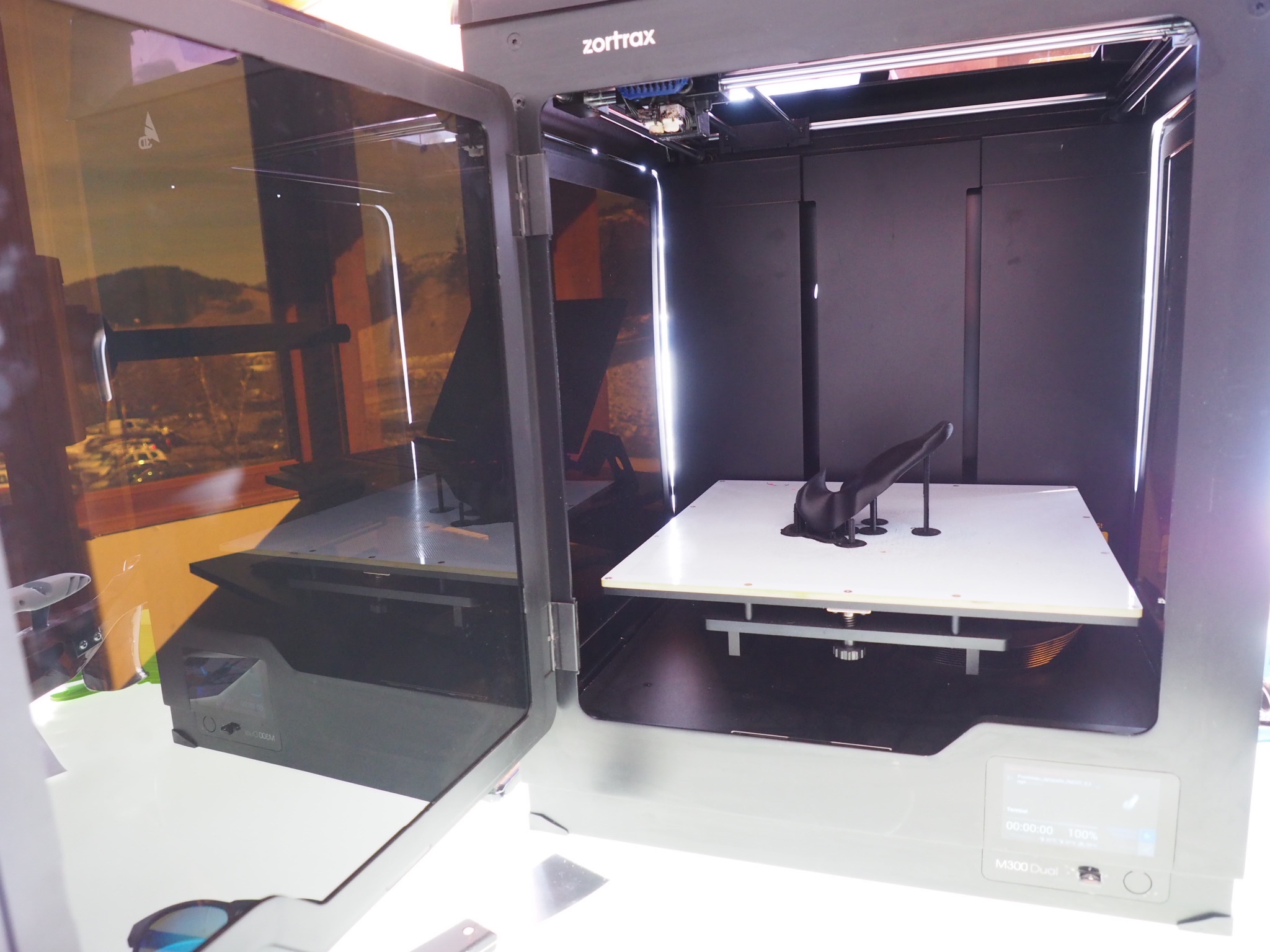
The Zortrax M300 Dual 3D printer was used to make a modified hand stop for a biathlon rifle to allow an injured athlete compete. Image Courtesy of Zortrax
Latest News
June 14, 2022
When a French national biathlete’s Olympic hopes were dashed due to a hand injury, 3D printing renewed a chance at crossing the finish line thanks to a modified biathlon rifle hand stop which enabled him to restart training.
The biathlete suffered a cycling accident that fractured two bones in the forearm, creating a recovery period that put an aggressive Olympic training schedule at risk. Specifically, the biathlete’s range of motion in the injured arm was severely limited, making it next to impossible to aim a standard biathlon rifle in a prone shooting position. Rather than put training sessions on hold for the entire recovery period, the French team set out to modify the rifle working with Athletics 3D, a French manufacturer of custom sports gear, and the Zortrax M300 Dual 3D printer.
Athletics 3D started by using a Zeiss 3D scanner to make a precise digital model of the original hand stop—the baseline design on which it would enact changes. Because of the biathlete’s severely limited ulnar deviation angle, the design team concentrated on changing the angle of the hand stop so the biathlete could aim without twisting his wrist while also increasing the area of contact between the hand stop and the palm to provide greater stability, explains Clement Jacquelin, Athletics 3D’s CEO and founder.
Once the design was settled, the next step was zeroing in on the right materials and 3D printer. Given that World Cup biathlon races are held in temperatures as low as -25 degrees Celsius, the material was a critical factor as low temperatures can degrade polymer performance. The team zeroed in on BASF Ultrafuse PP GF30 as the materials choice as it is exceptionally stiff and resistant to various chemicals and UV light. The BASF material also exhibits robust mechanical strength and thermal stability—essential characteristics for high-performance in potentially freezing conditions.
“We could not just use popular filaments like standard ABS or PLA,” Jacquelin said in a prepared release. “The part had to withstand significant stress, be resistant to impacts, and have a great surface quality.” Thermal stability was the central determining factor leading to the team's choice of BASF Ultrafuse PP GF30, Jacquelin added.
The Zortrax M300 Dual 3D printer, which was factory-calibrated to work with the BASF material, had an edge producing irregular, organic shapes like the specialized hand stop design. “Ergonomic shapes we use in our sports gear are always challenging and the utmost precision is necessary to achieve the desired effect,” he explained. The other upside to the Zortrax M300 model was the Z-SUITE software, which came with pre-defined printing profiles for supported materials like BASF Ultrafuse PP GF30 filament, which meant the Zortrax engineers did the bulk of the heavy lifting. Not only did the software profiles deliver excellent printed parts, they also ensured consistent results in the event additional hand stops were required.
The biathlete trained with the modified hand stop for four months in 2021 and went back to the standard configuration once full wrist movement was restored. “Getting back to shooting and competing in World Cup races was made possible at least two months before it normally would have” without the 3D printed hand stop solution, Jacquelin maintained.
Watch this video to see the Zortrax M300 3D printer in action.
Subscribe to our FREE magazine, FREE email newsletters or both!
Latest News
About the Author
Beth Stackpole is a contributing editor to Digital Engineering. Send e-mail about this article to [email protected].
Follow DE





